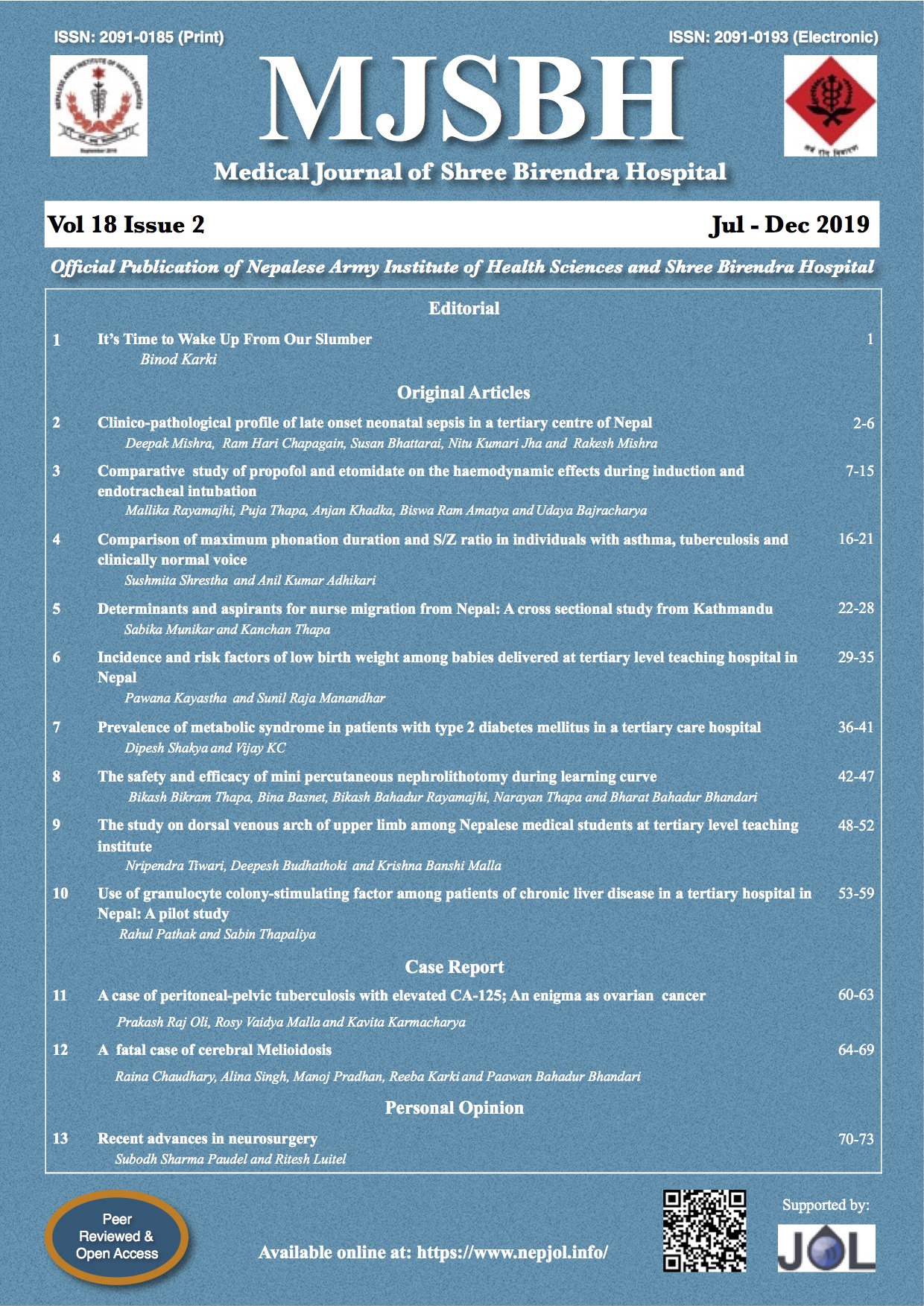The Safety and Efficacy of Mini Percutaneous Nephrolithotomy During Learning Curve
DOI:
https://doi.org/10.3126/mjsbh.v18i2.21355Keywords:
PCNL, Stone free rate, Learning curve, Clavein Dindo ClassficationAbstract
Introduction: Since its introduction in 1976, percutaneous renal stone surgery has undergone several modifications. Reduction in size of access sheath was one of them which was first reported by Jackman in 1998. The miniaturisation of access sheath in Mini-Percutaneous Nephrolithotomy surgery has significantly reduced the intervention related morbidity with similar outcome as of standard Percutaneous Nephrolithotomy.
Methods: This is a prospective cohort study where a single surgeon without previous experience of independent PCNL surgery performed Mini PCNL under controlled condition for renal stone sized 10 to 30 mm. The outcome was measured in terms of stone free rate and postoperative complications. The association of stone free rate and drop in haemoglobin level with different preoperative and operative variables were calculated with Pearson’s correlation test and p value <0.05 was considered significant.
Results: Mini PCNL was performed in total of 63 renal units. The mean age was 37.8 ± 9.9 years with male: female ratio of 1.8:1. The average stone size was 16.8 ± 2.9 mm. The mean operative time was 55.2 ± 19.0 (30-110) minutes. The stone free rate was 98.2 ± 3.6 %. The mean drop in haemoglobin was 1.3 ± 0.8 and blood transfusion rate was 4.7%. The average hospital stay was 2.6 ± 1.3 days. The grade I complications was 15.8% and grade II and III was 7.9% each. Stone free rate was significantly associated with stone number (r = -0.47, p = 0.004). Similarly fall in haemoglobin was associated with total operative time (r = 0.49, p = 0.003). The stone size, hardness of stone (HU) and size of access sheath had no significant association with stone free rate and fall in haemoglobin.
Conclusions: Mini PCNL is as effective as standard PCNL with higher safety margin in small and medium size stone (10 to 30 mm) during learning curve of endo-urology procedure.
Downloads
Downloads
Published
How to Cite
Issue
Section
License
This license enables reusers to distribute, remix, adapt, and build upon the material in any medium or format for noncommercial purposes only, and only so long as attribution is given to the creator.




